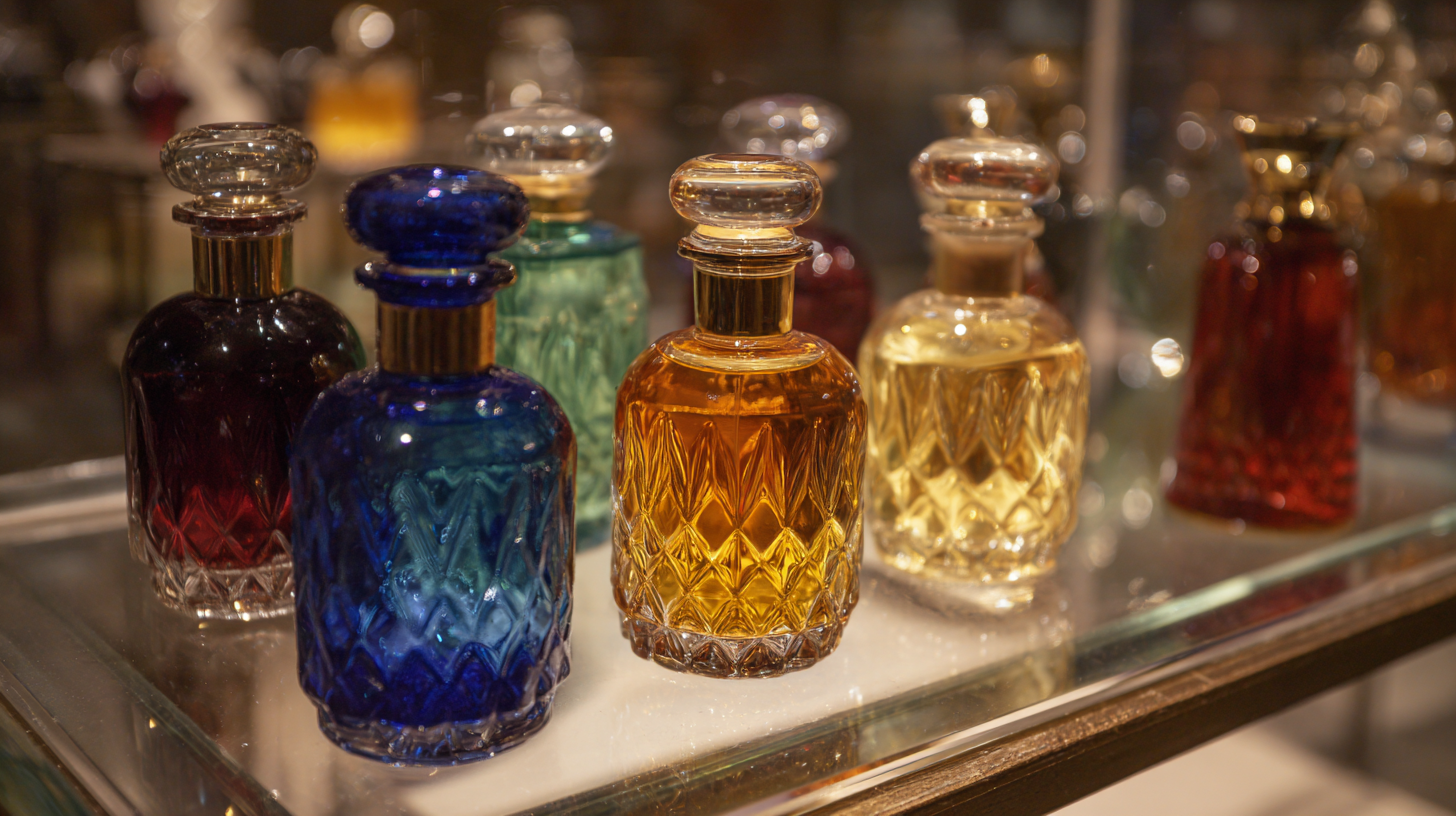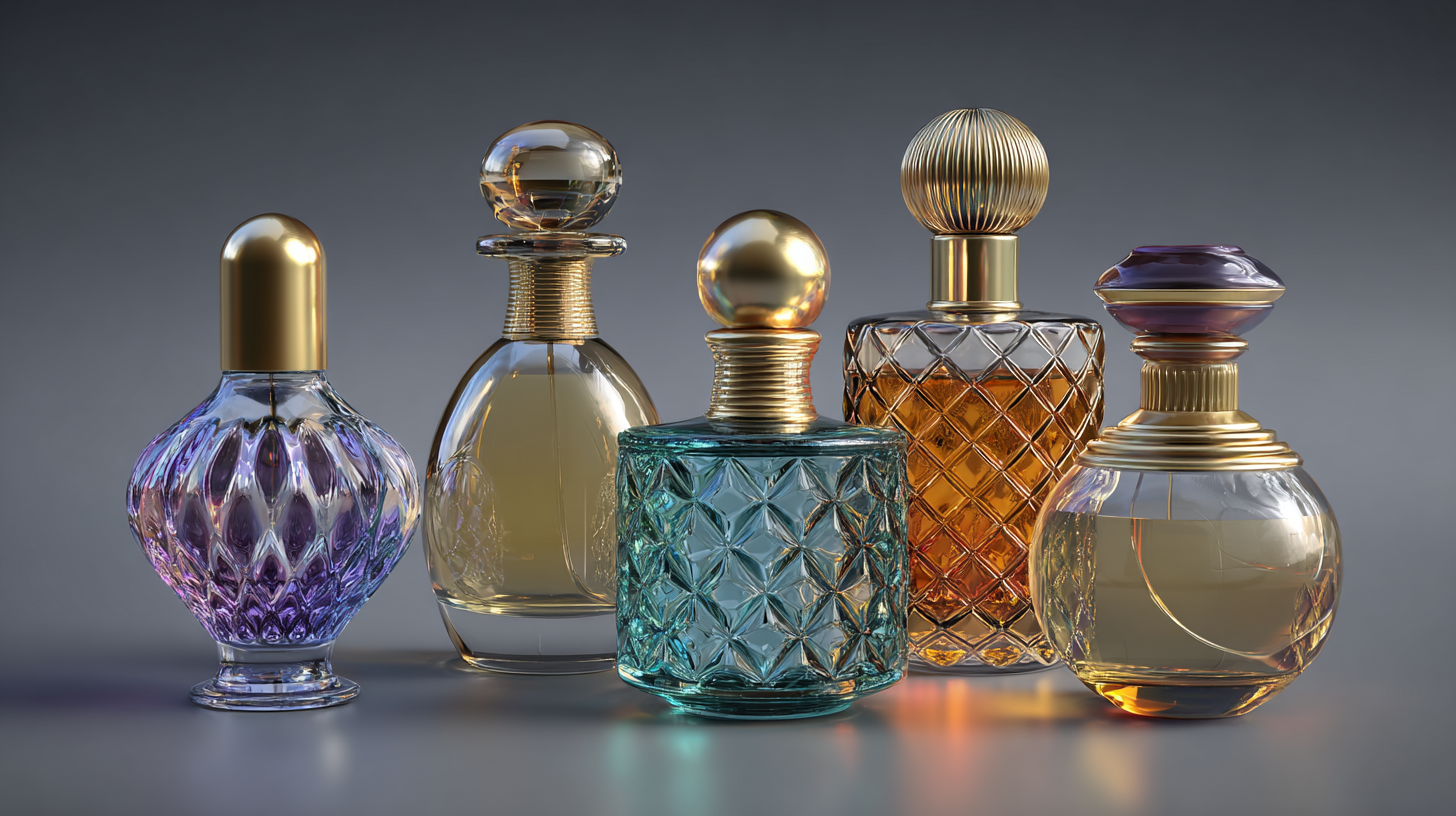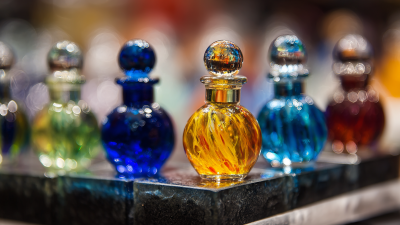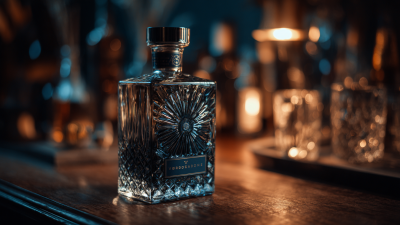
 Perfume bottles are not merely vessels for fragrant liquids; they are intricate artworks that blend both aesthetic beauty and functional design. This exploration into the art and science of perfume bottles seeks to uncover the various dimensions that contribute to their allure and utility. From the elegant curves and ornate embellishments that captivate the eye to the practical considerations of material and ergonomic shape that enhance user experience, the world of perfume bottles is a fascinating intersection of creativity and innovation.
Perfume bottles are not merely vessels for fragrant liquids; they are intricate artworks that blend both aesthetic beauty and functional design. This exploration into the art and science of perfume bottles seeks to uncover the various dimensions that contribute to their allure and utility. From the elegant curves and ornate embellishments that captivate the eye to the practical considerations of material and ergonomic shape that enhance user experience, the world of perfume bottles is a fascinating intersection of creativity and innovation.
As we delve deeper into this topic, we will examine how the design of these containers influences our perceptions of fragrance, the psychological impact they may have on consumers, and the innovative advancements that continue to redefine their roles in modern perfumery. Ultimately, understanding the significance of perfume bottles allows us to appreciate them not only as containers of scent but also as significant artifacts of culture and artistry.
The evolution of perfume bottle design reflects both technological advancements and cultural shifts throughout history. In ancient civilizations, such as Egypt and Greece, perfumes were stored in simple clay or glass vessels adorned with intricate carvings. These bottles not only served as containers but also as artistic expressions of spirituality and luxury, often resembling the deities they were dedicated to. As trade routes expanded, the exchange of ideas led to the adoption of more sophisticated methods of glassmaking, enabling the creation of ornate bottles that were both functional and visually captivating.
As we transitioned into the modern era, the industrial revolution brought about mass production, leading to a democratization of perfume. The 20th century witnessed a significant transformation in bottle design, with brands opting for unique shapes that defined their identity. Art Deco styles introduced geometric forms, while the mid-century embraced minimalism, focusing on clean lines. Designers began collaborating with artists and architects, resulting in bottles that were not just containers but collectible pieces of art. Today, perfume bottles continue to evolve, showcasing innovative designs that challenge conventionality, reflecting the dynamic interplay between fashion, art, and personal expression.
When it comes to the creation of functional perfume bottles, the choice of materials is paramount. Different materials can not only enhance the aesthetic appeal of a bottle but also influence the preservation and delivery of the fragrance. According to a report by Grand View Research, the global perfume packaging market is projected to reach USD 12.46 billion by 2025, indicating a significant shift in consumer preferences towards premium packaging options. Glass remains the leading material thanks to its ability to protect fragrances from external elements, while also offering a premium look and feel.
When selecting materials for perfume bottles, consider the impact of weight and durability. Heavier glass bottles tend to convey luxury, while lighter options may enhance portability for travel-size fragrances. Additionally, the chemical compatibility of materials is crucial; for instance, some plastics may react negatively with certain essential oils, altering the scent.
**Tips:** Always conduct compatibility tests if you’re using unconventional materials. Opt for high-quality closures to prevent leaks, ensuring the fragrance remains intact. And remember, the tactile experience of a bottle can significantly influence a consumer’s perception, so invest in ergonomic designs that are pleasing to hold.
Perfume bottles serve as not only vessels for fragrance but also as significant elements of artistic expression. The design of these bottles merges aesthetics with functionality, creating a balance that captivates consumers. The choice of materials—from glass to metals—along with varying shapes and colors, reflects the brand's identity and evokes emotions that enhance the olfactory experience. An elegantly crafted bottle can be a piece of art itself, inviting users to engage with the product even before the scent is experienced.
Furthermore, the importance of usability in perfume bottle design cannot be overlooked. An intuitive dispensing mechanism ensures that the fragrance can be applied effortlessly, while ergonomic shapes allow for comfortable handling. Designers must consider practical aspects such as the size and weight of the bottle, making it not only visually appealing but also convenient for everyday use. The intersection of art and utility in perfume bottle design underscores the significance of both form and function, highlighting how an aesthetically pleasing presentation can enhance the overall experience of fragrance.

The evolution of perfume bottle functionality has dramatically influenced the fragrance industry, enhancing both user experience and product longevity. Recent market studies estimate that the global perfume bottle market was valued at approximately $10 billion in 2022, with a projected annual growth rate of around 5.3% through 2030. This surge is largely driven by innovations in bottle design, particularly in the areas of sprayers and refillable options. Consumers are increasingly drawn to products that balance aesthetics with practicality, leading to a rise in demand for ergonomic sprayers that provide precise application while minimizing product waste.
In addition to sprayers, the trend towards refillable perfume bottles is reshaping consumer behavior and sustainability practices within the industry. Reports indicate that around 35% of consumers in the luxury fragrance segment now prefer refillable options, reflecting a growing awareness of environmental impacts. Brands that incorporate refillable designs not only appeal to eco-conscious consumers but also foster brand loyalty through thoughtful, long-lasting packaging solutions. As the industry strives for sustainability and innovation, the art and science of perfume bottle design will continue to play a critical role in attracting and retaining customers in a competitive market.
Collecting perfume bottles is a delightful venture that marries aesthetic appreciation with historical curiosity.
For enthusiasts and collectors alike, understanding the unique characteristics of each bottle can greatly enhance the collecting experience.
When beginning a collection, it’s important to research various styles, materials, and historical significance.
Bottles can range from vintage art deco designs to modern innovations, reflecting the changing tastes of their eras.
Collectors should pay attention to the craftsmanship, including the intricacies of the stopper and the overall shape,
as these details can significantly influence a bottle's value.
Another key aspect of collecting perfume bottles is networking within the community. Joining collector groups, attending trade shows, and participating in online forums can provide invaluable insights and updates on rare finds. It's also beneficial to establish a budget and to be aware of potential fakes in the market. Documenting your collection through photographs and notes can help track the provenance and condition of each piece. Overall, collecting perfume bottles not only enriches your personal collection but also offers a window into the art and history of fragrance.







